Sports stadiums are more than just venues for games—they are iconic structures that bring together massive crowds and create unforgettable experiences. Around the world, these colossal arenas showcase incredible architectural designs, state-of-the-art technology, and the passion of millions of fans. From hosting legendary soccer matches to being the stage for major concerts and cultural events, the largest stadiums stand as symbols of human ambition and community spirit. This list highlights 20 of the largest sports stadiums globally, exploring their impressive capacities, unique features, and the stories that make them extraordinary.
Rungrado 1st of May Stadium – Pyongyang, North Korea
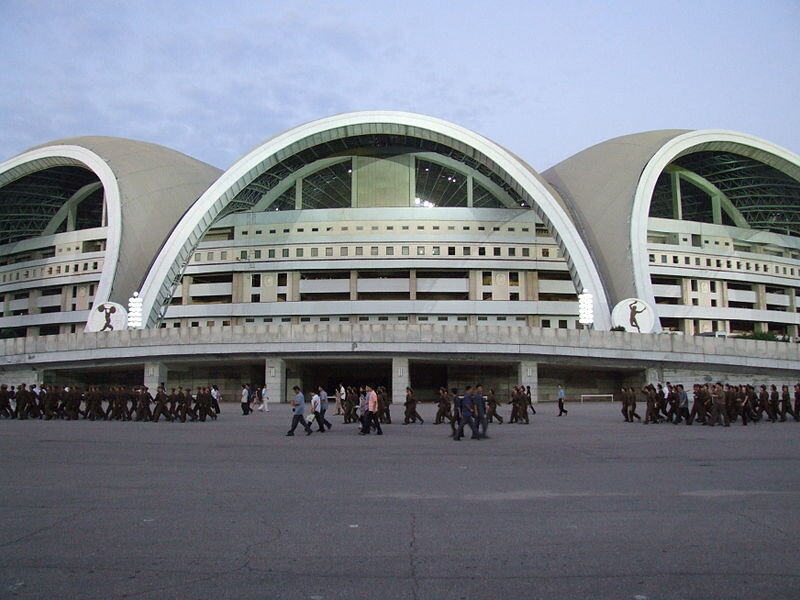
The Rungrado 1st of May Stadium is the largest sports stadium in the world, boasting a staggering seating capacity of 114,000. Located in Pyongyang, North Korea, this stadium spans over 20.7 hectares. It features a unique roof design that resembles a magnolia blossom, symbolizing peace and prosperity. Opened in 1989, it primarily hosts soccer matches and the Mass Games, a famous North Korean event blending gymnastics and performance art. Its colossal size is matched by an aura of mystery due to the country’s restricted access policies. Beyond sports, it has also hosted political events and ceremonies. Despite its massive scale, the stadium has been praised for its surprisingly elegant architectural form.
Michigan Stadium – Ann Arbor, Michigan, USA
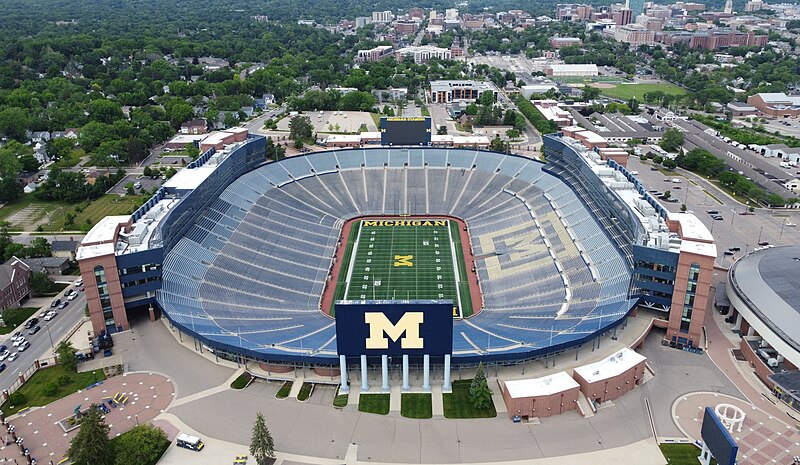
Nicknamed “The Big House,” Michigan Stadium is the second-largest stadium globally, with a capacity of 107,601. Home to the University of Michigan Wolverines football team, this stadium first opened its doors in 1927. Renovations over the years have expanded its seating while maintaining its iconic bowl shape. Its record attendance stands at over 115,000 during a college football game. The stadium is known for its incredible game-day atmosphere and historical significance in American college football. During non-game days, it serves as a venue for university graduations and even international soccer matches. A defining feature is the massive scoreboard, among the largest of its kind.
Beaver Stadium – University Park, Pennsylvania, USA
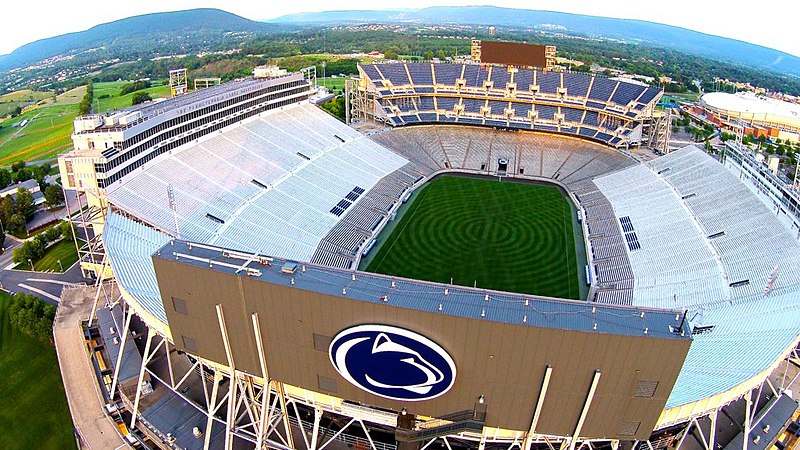
Beaver Stadium, home to the Penn State Nittany Lions, is the third-largest sports stadium worldwide, with a capacity of 106,572. Opened in 1960, it has undergone numerous expansions to accommodate its massive fanbase. Famous for its “White Out” games, the stadium becomes a sea of white as fans create an electrifying atmosphere. It is nestled amidst the scenic Pennsylvania landscape, offering a stunning view alongside its sporting action. Tailgating outside the stadium has become a cherished tradition for attendees. Its colossal structure combines steel and concrete, a testament to American engineering. Many consider it a symbol of collegiate pride and unity.
Ohio Stadium – Columbus, Ohio, USA
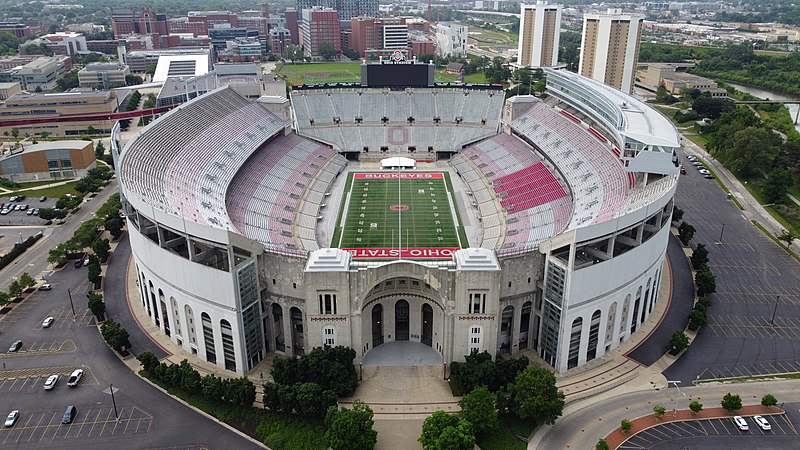
Ohio Stadium, also called “The Horseshoe,” holds up to 102,780 fans and is home to the Ohio State Buckeyes. Built in 1922, its iconic horseshoe shape is a hallmark of its design. The stadium has hosted college football games, concerts, and even military training during World War II. It boasts a modern press box, luxury suites, and cutting-edge LED lighting after renovations. Its location on the Ohio State University campus makes it a centerpiece for student life. Ohio Stadium’s atmosphere during a game is often described as electric, uniting fans in a powerful display of school spirit. The rich history and massive crowds make it a must-visit venue for any sports fan.
Kyle Field – College Station, Texas, USA
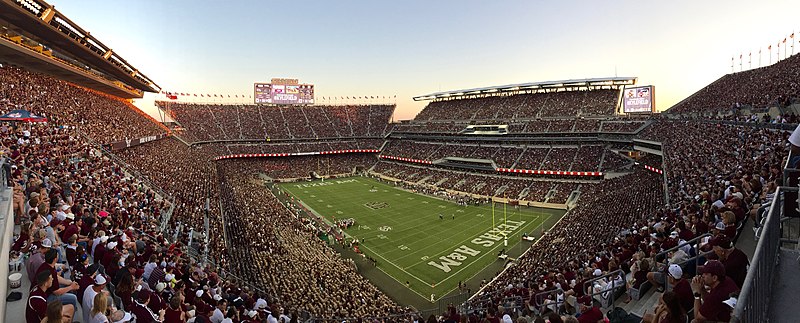
Kyle Field, the home of the Texas A&M Aggies, seats 102,733 fans, making it the fifth-largest stadium in the world. Known for its intimidating “12th Man” tradition, the stadium embodies the passion and dedication of Aggie supporters. It underwent a $485 million renovation in 2015, turning it into a modern marvel. The facility now includes massive video boards, enhanced seating, and improved accessibility. Game days here are marked by deafening cheers and synchronized chants, creating an unmatched atmosphere. Beyond football, Kyle Field is an architectural gem, with sleek designs and state-of-the-art amenities. Its impressive size and loyal fanbase make it a formidable venue.
Tiger Stadium – Baton Rouge, Louisiana, USA
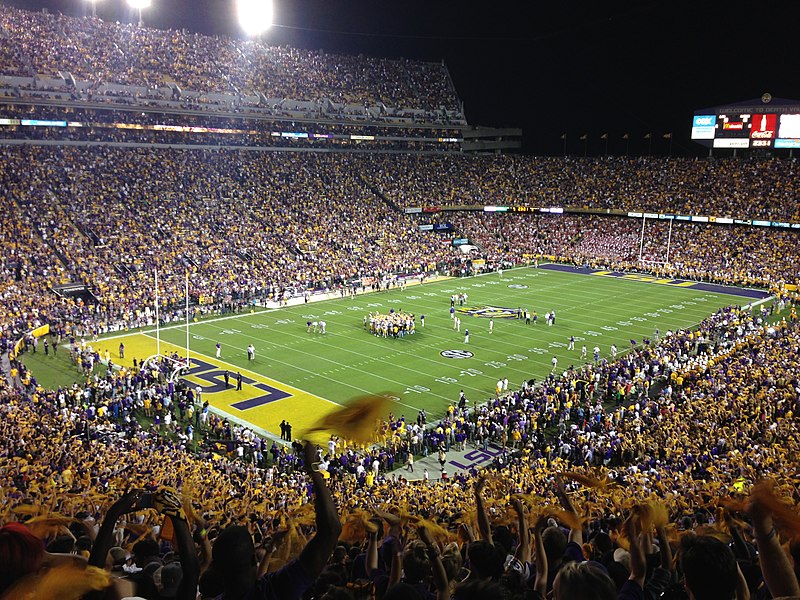
Tiger Stadium, fondly known as “Death Valley,” has a capacity of 102,321, making it one of the largest stadiums in the world. Home to Louisiana State University’s football team, the stadium has earned a reputation for being one of the loudest and most intimidating venues. Opened in 1924, it has been expanded multiple times to meet growing demand. The energy on game nights is palpable, with roaring fans and blaring fight songs. Its iconic architecture includes steep stands that keep spectators close to the action. Tiger Stadium is not only about football; it is a cultural institution for LSU fans. The history and passion it holds make it truly special.
Bryant-Denny Stadium – Tuscaloosa, Alabama, USA
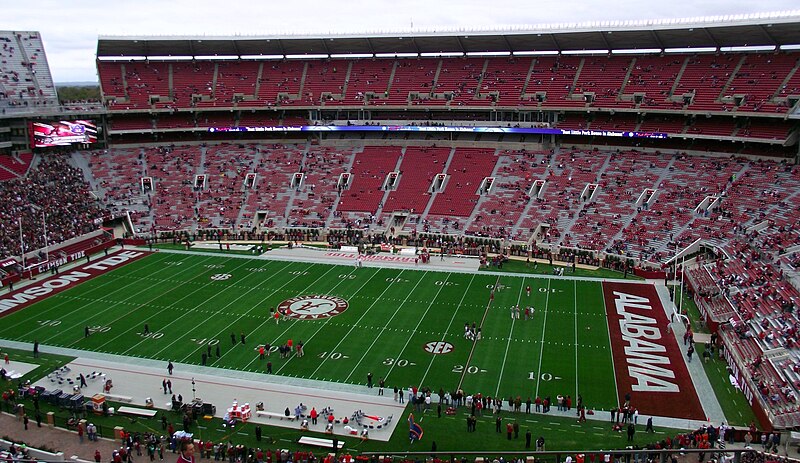
Bryant-Denny Stadium, with a capacity of 101,821, is home to the University of Alabama’s Crimson Tide football team. Opened in 1929, it has been expanded several times to accommodate the growing fanbase. The stadium is named after legendary coach Paul “Bear” Bryant and former university president George H. Denny. Known for its intense atmosphere, it becomes a sea of crimson during game days. The “Million Dollar Band” adds to the stadium’s electric energy, performing iconic fight songs. Renovations have modernized the venue with luxury boxes and massive video boards. It remains a symbol of Alabama’s dominance in college football.
Darrell K Royal-Texas Memorial Stadium – Austin, Texas, USA
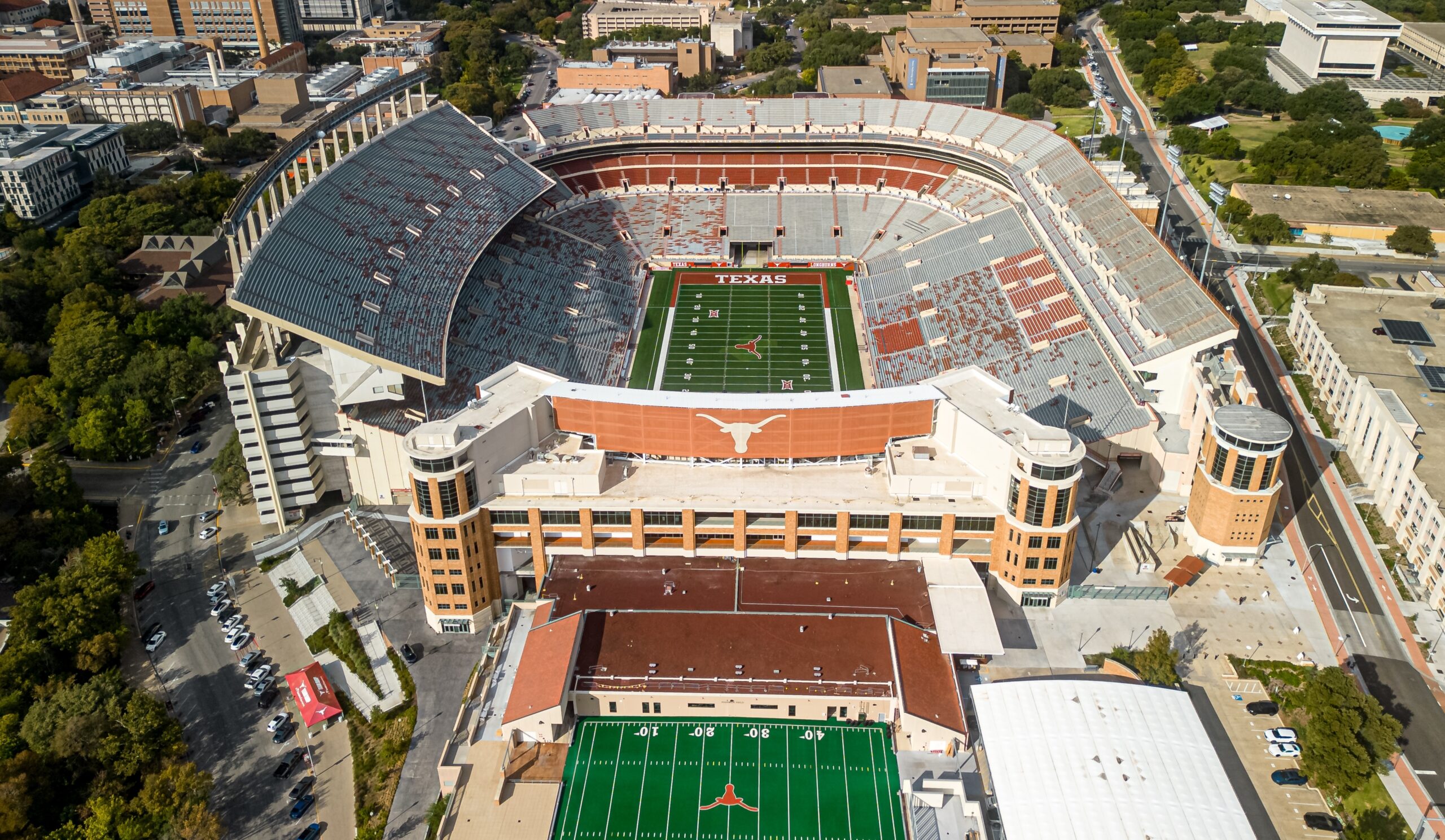
Seating 100,119 fans, Darrell K Royal-Texas Memorial Stadium is the heart of Longhorn football. Established in 1924, it was named in honor of the legendary coach and World War I veterans. The stadium is renowned for its passionate fans and traditions, such as the “Hook ’em Horns” salute. Its colossal structure towers over the University of Texas campus, embodying Texan pride. Recent upgrades have introduced modern amenities, including a state-of-the-art sound system. Game days feature dazzling light shows and booming cheers that echo throughout Austin. The stadium is not just a sports venue but a hub for Longhorn culture.
Melbourne Cricket Ground (MCG) – Melbourne, Australia
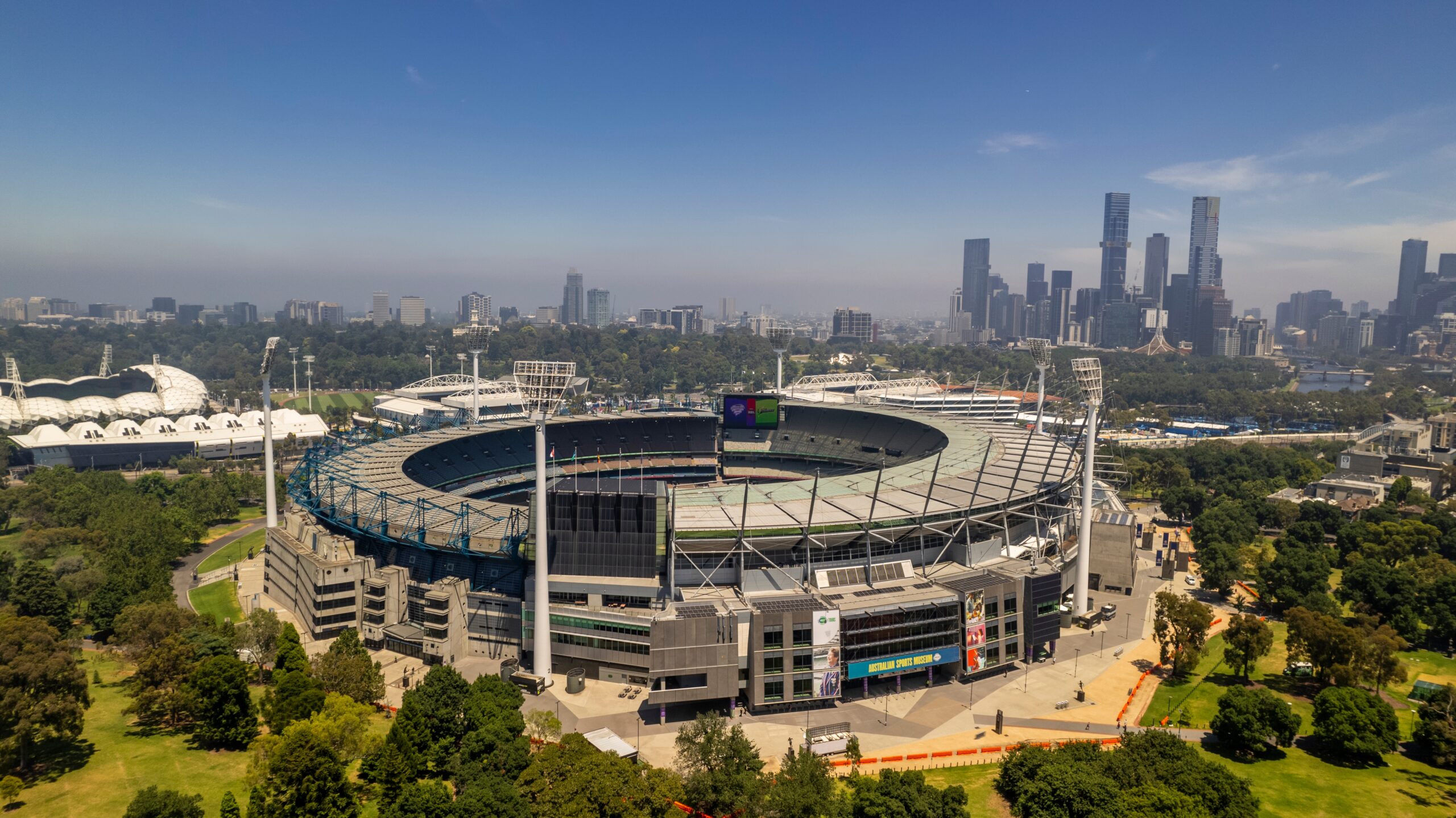
The Melbourne Cricket Ground, or MCG, is Australia’s largest stadium, holding up to 100,024 spectators. Known as “The G,” it is a multi-sport venue, primarily hosting cricket and Australian Rules Football. Opened in 1853, it holds a storied history, including hosting the first-ever cricket Test match. Its colossal size and unique light towers make it an iconic feature of Melbourne’s skyline. Beyond sports, the MCG has hosted major events like the Olympics and Commonwealth Games. It also doubles as a cultural landmark, with its National Sports Museum drawing countless visitors. The MCG is a testament to Australia’s love for sports and entertainment.
Camp Nou – Barcelona, Spain
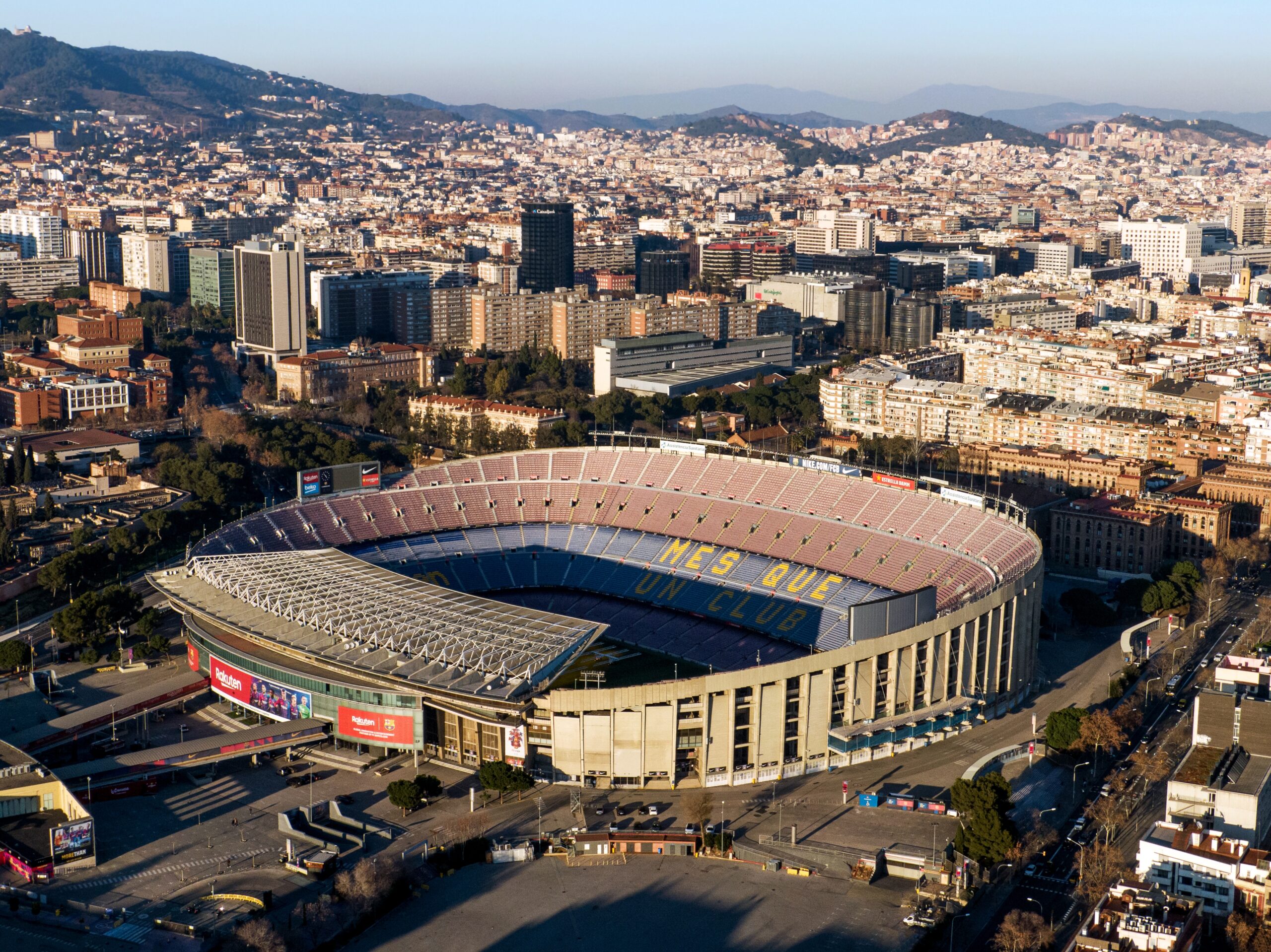
Camp Nou, with a capacity of 99,354, is the largest stadium in Europe and home to FC Barcelona. Built in 1957, it is a Mecca for soccer fans worldwide, known for its awe-inspiring size and vibrant atmosphere. The stadium’s design allows for incredible acoustics, amplifying chants from the passionate Catalan supporters. It features a museum showcasing Barcelona’s rich history and trophy collection. Ongoing renovations aim to increase capacity and add cutting-edge amenities. Camp Nou is more than just a stadium; it’s a symbol of Barcelona’s culture and footballing prowess. Its grandeur and history make it a must-see destination for sports enthusiasts.
Estadio Azteca – Mexico City, Mexico
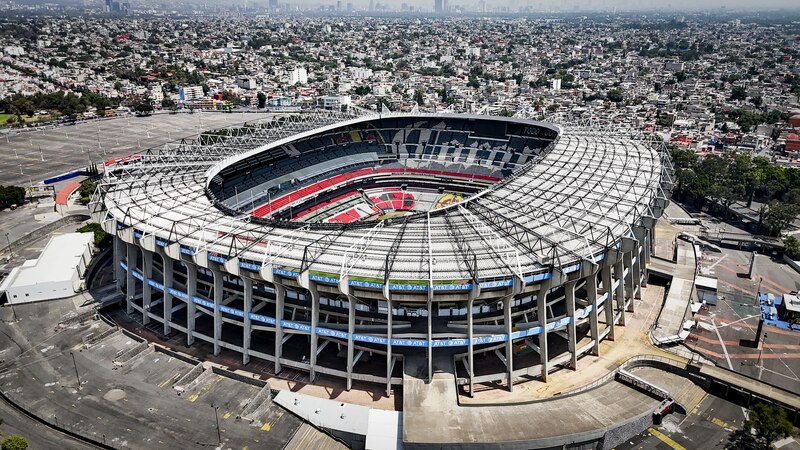
Estadio Azteca, seating 87,523, is the largest stadium in Mexico and an icon of global soccer. Opened in 1966, it is the only stadium to have hosted two FIFA World Cup finals. The Azteca is famed for its electric atmosphere and altitude, which challenges visiting teams. Its design ensures excellent visibility from every seat, enhancing the fan experience. In addition to soccer, it has hosted concerts and NFL games. The stadium’s historical significance includes Diego Maradona’s famous “Hand of God” goal in 1986. It remains a centerpiece of Mexican sports and culture.
Wembley Stadium – London, England
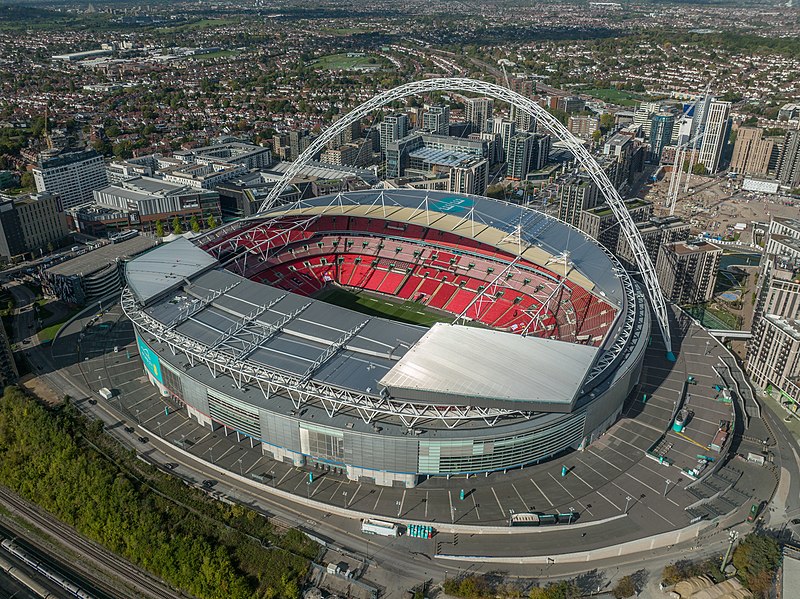
Wembley Stadium, with a capacity of 90,000, is the largest sports venue in the UK and an iconic symbol of English football. Rebuilt in 2007, it features the famous Wembley Arch, visible across London. The stadium hosts major football matches, including FA Cup finals and international games. Its retractable roof and state-of-the-art facilities make it one of the world’s most advanced venues. Wembley has also seen legendary concerts from artists like Queen and Adele. Its hallowed grounds evoke memories of historic sporting moments, including England’s 1966 World Cup victory. Few stadiums rival Wembley’s prestige and cultural significance.
FNB Stadium – Johannesburg, South Africa
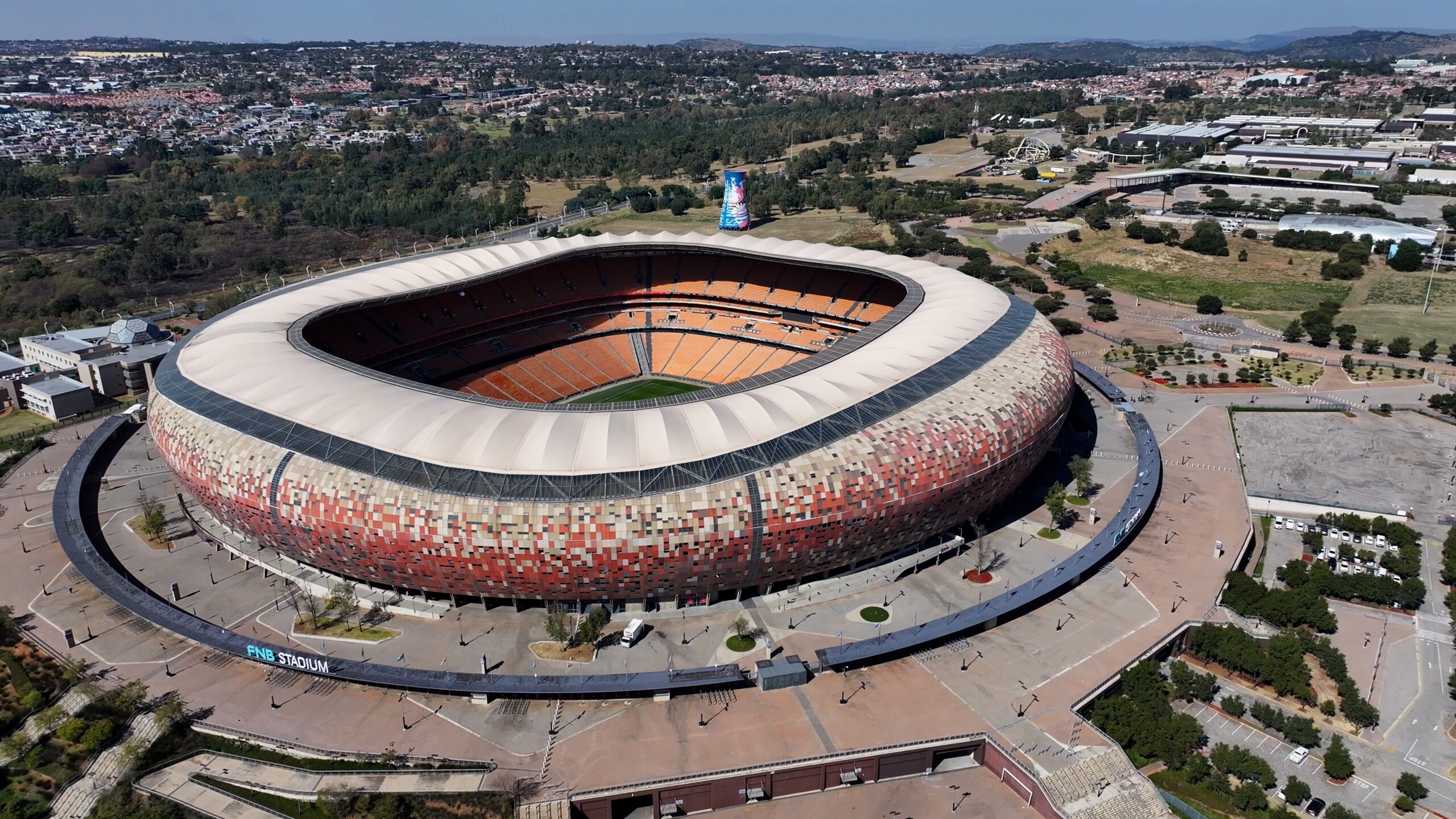
FNB Stadium, or Soccer City, seats 94,736 fans and is South Africa’s largest sports venue. Built in 1989 and renovated for the 2010 FIFA World Cup, it resembles an African calabash. It hosted the World Cup final, where Spain claimed their first title. The stadium is a hub for soccer, rugby, and concerts. Its design blends modern architecture with African cultural motifs. FNB Stadium also holds political significance, hosting Nelson Mandela’s memorial service. This venue embodies South Africa’s passion for sports and its rich history.
Rose Bowl – Pasadena, California, USA

The Rose Bowl, with a capacity of 88,565, is a landmark of American college football. Built in 1922, it has hosted countless iconic moments, including Super Bowl games and Olympic events. It’s most famous for the annual Rose Bowl Game, part of the New Year’s Day Tournament of Roses. The stadium’s open-bowl design offers breathtaking views of the San Gabriel Mountains. Beyond sports, it has hosted concerts by global superstars like Beyoncé and U2. As a National Historic Landmark, the Rose Bowl combines history with modern functionality. Few stadiums have such a rich and diverse legacy.
Salt Lake Stadium – Kolkata, India

Salt Lake Stadium, also known as Vivekananda Yuba Bharati Krirangan, holds up to 85,000 fans. Located in Kolkata, India, it is the largest stadium in the country and a hub for soccer and athletics. Built in 1984, it has hosted FIFA tournaments and high-profile cricket matches. Its elliptical design ensures excellent visibility for all spectators. Renovations in 2011 introduced modern seating and facilities, enhancing the fan experience. The stadium is also a cultural hotspot, hosting concerts and political rallies. It represents India’s growing stature in global sports.
AT&T Stadium – Arlington, Texas, USA
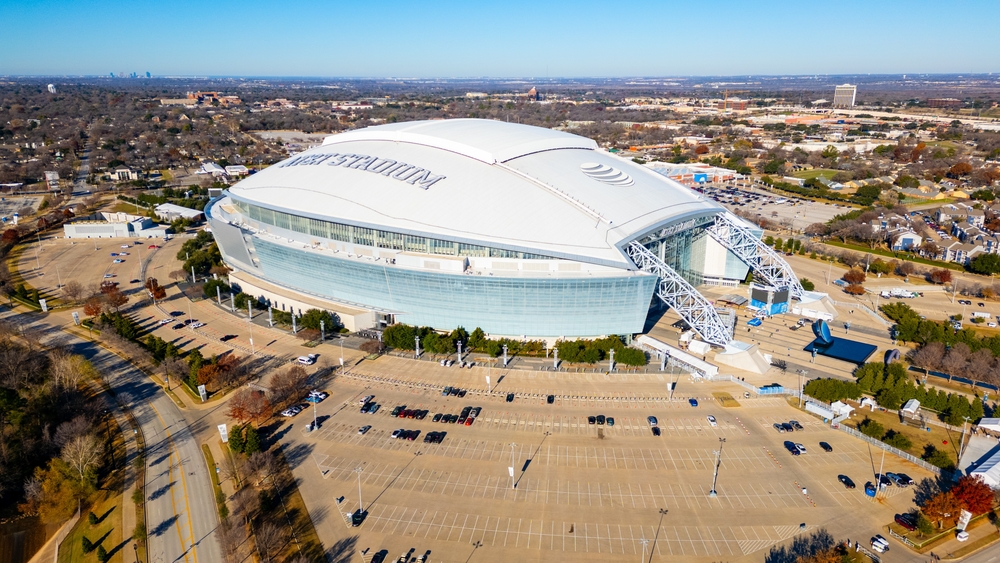
AT&T Stadium, home to the Dallas Cowboys, seats 80,000 but can expand to over 100,000 with standing-room-only areas. Opened in 2009, it’s renowned for its massive retractable roof and 72-foot-high video board. It hosts NFL games, concerts, and college football championships. The stadium’s sleek, futuristic design makes it a standout among modern venues. Its luxury suites and lounges offer unmatched comfort for fans. AT&T Stadium is a symbol of Texas-sized ambition and innovation. It’s more than a stadium; it’s an entertainment complex.
Melbourne Rectangular Stadium – Melbourne, Australia
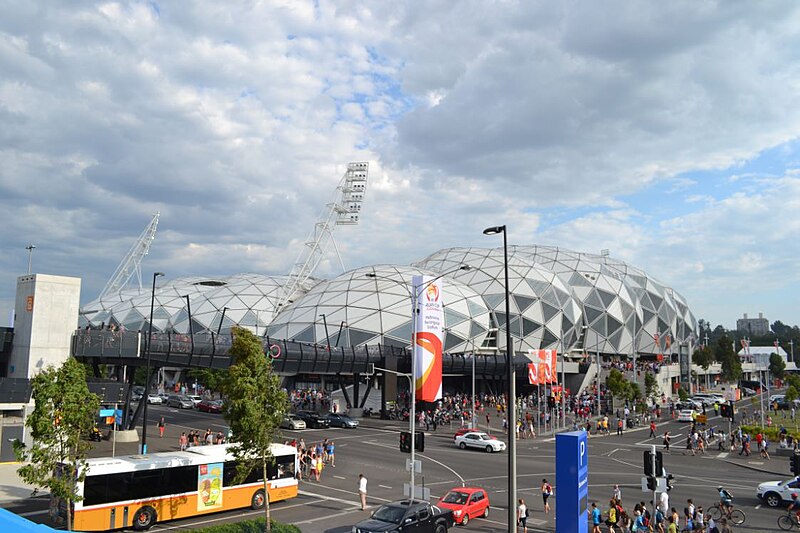
The Melbourne Rectangular Stadium, also known as AAMI Park, accommodates 30,050 fans, focusing on rugby and soccer. Its cutting-edge “bioframe” roof structure is visually stunning and highly efficient. Opened in 2010, it has received numerous awards for its unique design. It provides an intimate viewing experience, despite its relatively smaller size. The stadium also includes eco-friendly features, aligning with Melbourne’s sustainability goals. Its central location makes it a favorite among sports fans and tourists. AAMI Park showcases Melbourne’s commitment to architectural and sporting excellence.
Allianz Arena – Munich, Germany
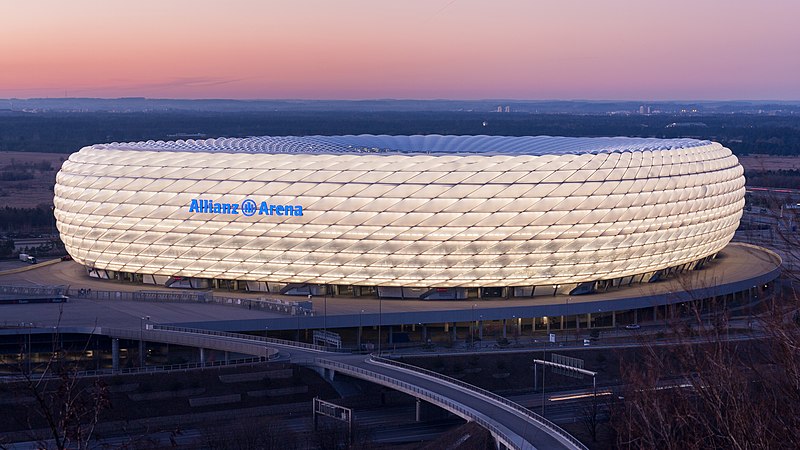
Allianz Arena, seating 75,024, is one of Europe’s most visually striking stadiums. Home to Bayern Munich, it features an illuminated façade that changes colors based on the event. Opened in 2005, it has hosted FIFA World Cup and UEFA Champions League matches. Its modern design prioritizes fan comfort and accessibility. The stadium’s acoustics amplify the energy of cheering fans, creating an electric atmosphere. Located in Bavaria, it is a centerpiece of German football. Allianz Arena blends beauty with functionality.
MetLife Stadium – East Rutherford, New Jersey, USA
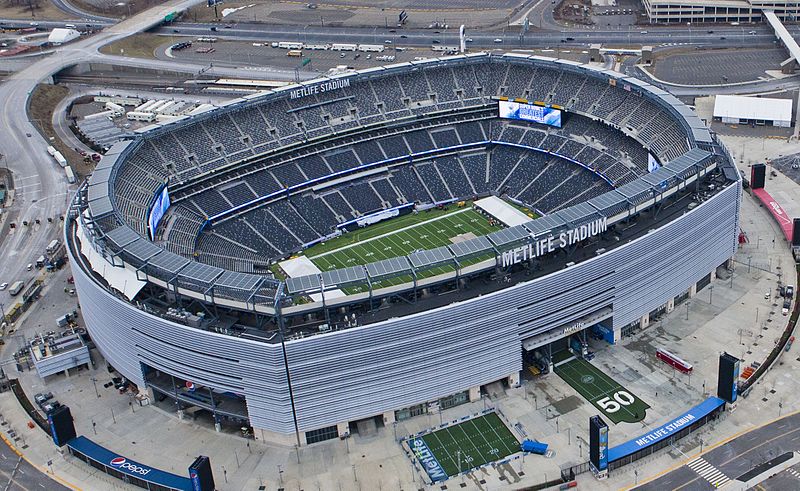
MetLife Stadium, seating 82,500, is home to the NFL’s New York Giants and Jets. Opened in 2010, it is one of the most expensive stadiums ever built. Its flexible design allows it to transform for various events, from football games to concerts. The venue includes luxury suites, advanced LED lighting, and eco-friendly features. It hosted Super Bowl XLVIII and continues to attract global events. Located near New York City, it’s easily accessible for millions of fans. MetLife Stadium combines state-of-the-art facilities with a prime location.
Signal Iduna Park – Dortmund, Germany
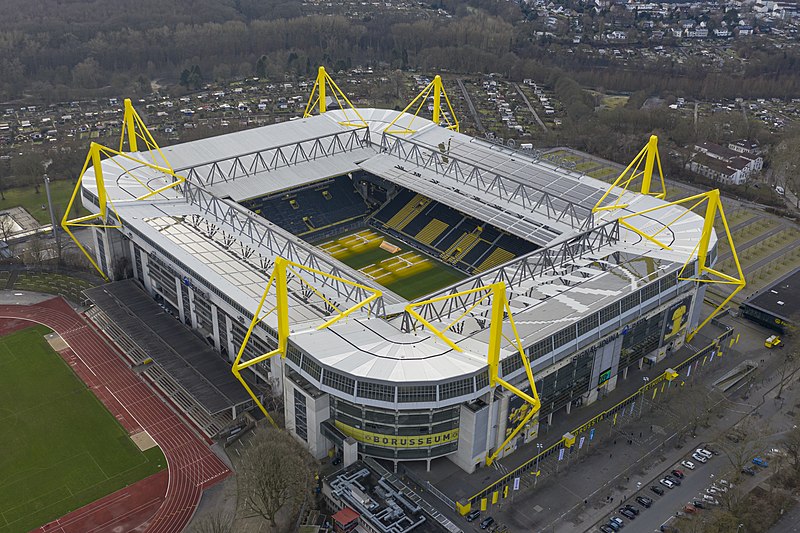
Signal Iduna Park, also known as Westfalenstadion, seats 81,365 and is the largest stadium in Germany. It’s famous for its “Yellow Wall,” the largest terrace for standing fans in Europe. Opened in 1974, it has become a fortress for Borussia Dortmund. The stadium offers a thrilling atmosphere, with fans known for their passion and loyalty. Its design emphasizes close proximity to the field, enhancing the viewing experience. Signal Iduna Park has hosted FIFA World Cup matches and UEFA tournaments. It’s a symbol of German football culture and architectural brilliance.
This article originally appeared on Rarest.org.
More From Rarest.Org
Mammals have evolved some fascinating adaptations over millions of years, with a few species standing out for their incredible longevity. From ocean giants like the bowhead whale to tiny creatures like Brand’s bat, they have mastered the art of surviving across decades, or even centuries. Read more.
Desert plants are true survivors, thriving in some of the harshest climates on Earth. With limited water, extreme heat, and intense sunlight, these unique plants have developed remarkable adaptations to conserve moisture and endure long droughts. Read more.
Life on Earth can be incredibly resilient, thriving in places we’d consider uninhabitable. Some bacteria have evolved to withstand extreme heat, crushing pressures, intense radiation, and even acidic or salty conditions. Read more.



